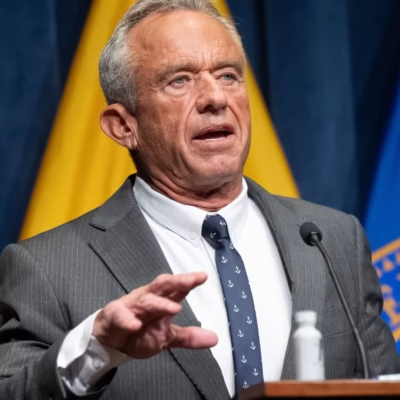Public Health Challenges in the U.S. have become more complex than ever before. As the country moves forward post-pandemic, new and existing health threats continue to impact millions of Americans. From mental health concerns to rising rates of chronic diseases, the U.S. faces serious challenges that demand immediate attention from policymakers, healthcare providers, and communities.
In this article, we break down the top 10 public health challenges in the U.S., helping you understand what’s affecting public well-being and what steps are being taken to address these critical issues.
1. Mental Health Crisis
Mental health is one of the most pressing public health challenges in the U.S. today. Depression, anxiety, and suicidal thoughts are rising across all age groups, especially among teens and young adults.
Key Facts:
- Over 1 in 5 adults in the U.S. experience mental illness annually.
- Suicide is the second leading cause of death among people aged 10–34.
Major Causes:
- Social isolation
- Economic stress
- Substance abuse
- Social media exposure
What’s Being Done:
- Expansion of mental health hotlines
- Telehealth services for therapy
- Mental health education in schools
2. Chronic Diseases
Chronic diseases like heart disease, diabetes, and cancer are the leading causes of death and disability in the U.S.
Key Stats:
- 6 in 10 adults have a chronic disease.
- These conditions account for 90% of the nation’s $4.1 trillion in annual healthcare costs.
Why It’s a Problem:
- Poor diet and lack of exercise
- Smoking and alcohol use
- Inadequate preventive care
Response:
- Community health programs
- Promotion of healthier lifestyles
- Regular screening and early detection
3. Opioid Epidemic and Substance Abuse
The opioid crisis continues to devastate families and communities.
Stats:
- Over 100,000 drug overdose deaths occurred in 2023.
- Fentanyl is now the deadliest drug in America.
Challenges:
- Overprescription of opioids
- Limited access to treatment
- Stigma around addiction
Solutions:
- Harm reduction programs (e.g., naloxone distribution)
- Expanding addiction recovery centers
- Policy changes on prescription practices
4. Access to Healthcare
Millions of Americans still face barriers to basic healthcare, especially in rural and low-income areas.
Key Issues:
- High cost of insurance and medications
- Lack of nearby clinics or hospitals
- Racial and economic disparities
Who Is Affected:
- Uninsured individuals
- People with chronic illnesses
- Immigrant and minority communities
Ongoing Efforts:
- Medicaid expansion in some states
- Community health centers
- Healthcare subsidies under the Affordable Care Act
5. Gun Violence and Public Safety
Gun violence has become a growing public health crisis, not just a criminal issue.
Stats:
- Firearms are now the leading cause of death for children and teens in the U.S.
- Over 45,000 gun-related deaths occur annually.
Impacts:
- Physical injuries
- Trauma and mental health issues
- Fear in schools and communities
Public Health Response:
- Violence prevention programs
- Community policing and education
- Gun safety laws and advocacy
6. Health Inequities and Racial Disparities
Not all Americans receive the same quality of healthcare.
Disparities Seen In:
- Infant mortality
- COVID-19 outcomes
- Cancer survival rates
Root Causes:
- Systemic racism in healthcare
- Socioeconomic gaps
- Cultural and language barriers
Actions Being Taken:
- Diversity in healthcare workforce
- Implicit bias training
- Targeted public health campaigns
7. Climate Change and Environmental Health
The impact of climate change on human health is real and growing.
Health Effects Include:
- Respiratory illnesses due to pollution
- Heat-related illnesses
- Water and food insecurity from droughts and floods
Why It Matters:
- Disproportionate impact on the poor
- Increase in vector-borne diseases like Lyme disease and West Nile virus
Strategies:
- Clean energy initiatives
- Public health emergency preparedness
- Green infrastructure in cities
8. Infectious Disease Threats
Even after COVID-19, the risk of future infectious disease outbreaks remains high.
Ongoing Concerns:
- Emerging zoonotic diseases
- Vaccine hesitancy
- Antibiotic resistance
Recent Examples:
- Monkeypox outbreaks
- Measles in under-vaccinated communities
- Rise of resistant tuberculosis strains
Prevention Efforts:
- Better disease surveillance systems
- Global health partnerships
- Public awareness and vaccination drives
9. Maternal and Child Health
The U.S. has one of the highest maternal mortality rates among developed nations.
Facts:
- Black women are 3 times more likely to die from pregnancy-related causes.
- Infant mortality is higher in the U.S. than in Europe or Canada.
Challenges:
- Limited prenatal care access
- Racial disparities
- Inadequate postpartum support
Progress:
- Doula and midwife services
- Maternal health grants
- Paid family leave advocacy
10. Obesity and Poor Nutrition
Obesity is a gateway to many other health issues.
Stats:
- Over 40% of American adults are obese.
- Childhood obesity rates have tripled in the last 30 years.
Causes:
- High consumption of processed foods
- Sedentary lifestyles
- Lack of access to healthy food (food deserts)
National Initiatives:
- School lunch reforms
- Sugar tax proposals
- Campaigns promoting physical activity
The Path Forward
Addressing these public health challenges in the U.S. requires a coordinated national effort. It’s not just the job of doctors and nurses, but of educators, policymakers, parents, and community leaders. Preventing disease, promoting wellness, and ensuring access to care are critical steps for building a healthier future.
Key Takeaways:
- Public health is not only about treating illness but also about preventing it before it starts.
- Mental health, chronic diseases, and healthcare access continue to dominate the list of urgent issues.
- Climate, violence, and inequality add further complexity to public health in America.
- Collaboration, innovation, and equity must guide future policies and public health strategies.
Conclusion
The public health challenges in the U.S. are interconnected and impact every part of society. While these issues may seem overwhelming, many solutions are already in motion. By understanding the problems and supporting policies that put public health first, we can build a stronger, healthier nation—together.
Read Next – Robotic Heart Surgery Breakthrough: A New Era Begins






